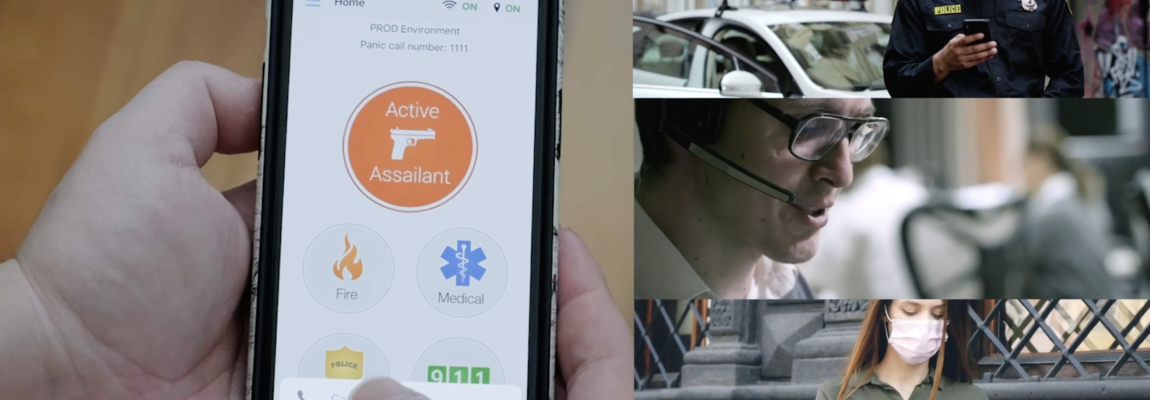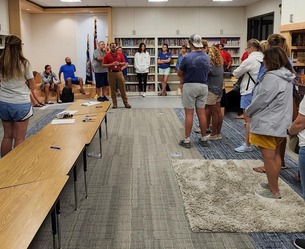
A platform that encourages healthy conversation, spiritual support, growth and fellowship

NOLACatholic Parenting Podcast
A natural progression of our weekly column in the Clarion Herald and blog

The best in Catholic news and inspiration - wherever you are!
Catholic schools raise level of security awareness
-

By Peter Finney Jr.
Clarion Herald
The archdiocesan Department of Catholic Education and Faith Formation received a grant from the Louisiana State Police to offer Catholic elementary and high schools use of the “Rave Panic Button” app designed to send emergency notifications to authorities in case of an active shooter on campus or some other police, fire or medical emergency situation.The Rave Panic Button app, which school administrators, faculty and staff can download on their smartphones, allows a person on campus to generate a 911 call instantly with the push of one button. Simultaneously, an alert would be sent to campus administrators, school resource officers and other designated employees to let them know that an emergency situation was being reported.
Uses ‘geofencing’ to pinpoint
The app uses “geofencing” technology, allowing the 911 operator who receives the alert to instantly determine the location of the campus from which the alert is being generated.The app is designed to work when the teacher or principal is physically on campus; if the teacher or principal is off campus – which the geofencing technology would ascertain – the 911 call would have to be made in the regular way.
Mount Carmel Sister Mary Ellen Wheelahan, safe environment coordinator for the Archdiocese of New Orleans, said acceptance of the Rave Panic Button app among Catholic schools is growing in the wake of the tragic school shooting in Uvalde, Texas, that claimed the lives of 19 elementary students and two teachers.
“The schools are starting to really get into it because of the shootings and the danger,” Sister Mary Ellen said. “I was on retreat recently, and I was getting these text messages saying that this school was activating the app and testing out their system.”
Martha Mundine, deputy superintendent of Catholic schools, said all schools are required to train faculty, students “and sometimes parents” on what to do in a crisis.
“This is the world we live in,” Mundine said.
Every school sends verification to the archdiocesan education department by the end of August that it has conducted the training, which often involves police and fire officials who are invited to campus.
Summer training
Over the summer, law enforcement, including SWAT team members, are invited to campuses to do a walk-through to identify the strengths and weaknesses in a school’s security plan. The individual school’s safety and crisis plans are shared with local law enforcement and the archdiocese.Chad Barwick, head of school at Archbishop Hannan High School in Covington, said his school is working through the Rave Panic Button system with the goal of full implementation on campus.
“The app does a little bit of cross communication with other partners such as faculty and staff and then also alerts police, fire and medics in case of a specific emergency,” Barwick said. “It kind of automates the ‘see something, hear something, do something.’ If it were a fire, then you would immediately hit the fire alarm button. If it were someone who’s on campus and we needed to lock down, it would tell all the teachers and let the police know that we were locking down.”
Key fob, ID card entry
Archbishop Hannan, which has classroom buildings set up around a quadrangle, has instituted a key fob security system in which a student’s ID card can open a locked door. The door closes quickly and locks once the student enters.“Our kids go in and out of buildings and cross over to buildings,” Barwick said. “They can’t come in at 6 in the morning or at 10 o’clock at night because the fob is programmed to give them limited access. It’s a much more secure environment for students. We don’t worry about people just walking into the different buildings.”
St. Scholastica Academy in Covington also is instituting a key fob system for its students this year.
Barwick said if a student loses his or her ID card, it can be deactivated quickly so that someone finding it won’t be able to gain access to the buildings.
Schools also have been actively training teachers through “Stop the Bleed” programs on how to handle worst-case scenarios – how to provide immediate first aid in case someone on campus is seriously injured and in danger of bleeding to death.
 St. Peter School in Covington has hosted an active shooter training with the Covington police for the last four years and also regularly trained in “Stop the Bleed.”
St. Peter School in Covington has hosted an active shooter training with the Covington police for the last four years and also regularly trained in “Stop the Bleed.”Necessary preparation
“It’s a sobering thing to talk about,” said St. Peter principal Michael Kraus. “We, like other schools, are getting a police detail added. I feel like we’ve done a lot over several years when it comes to safety and looking at active shooter potential nightmares.”St. Peter School recently installed a $20,000 upgrade in security cameras around campus “so you can see every hallway and entry point with the click of a button,” Kraus said.
“There’s a lot going on,” Kraus added, “but you still always feel vulnerable. That’s the problem, no matter what you do. Hopefully, you just try to throw enough stuff out there and keep these nightmares from happening.”
Barwick agrees that school security has become a major focus of parents.
“I think parents have always had concerns about making sure their kids’ environment is safe, but I would say we’re very blessed at Hannan to have a well-trained faculty and students who will bring something up if it doesn’t look right,” Barwick said. “This year is less about new systems than tightening up on training.”




